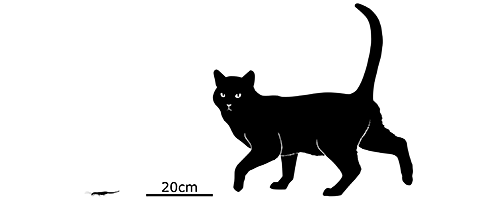Located in the South Atlantic Ocean, Saint Helena is a small volcanic island that formed several million years ago on the Mid-Atlantic Ridge. It’s one of the most remote islands in the world, and with no native land mammals and no large predators it developed an ecosystem with several unique flightless birds, and hundreds of endemic invertebrates and plants.
The Saint Helena giant earwig (Labidura herculeana) was, as its name suggests, an enormous species of earwig. Growing as large as 8.4cm long (3.3″) it was the biggest of its kind in the world, and was completely flightless with no hind wings.
It lived in deep burrows in the arid plain and gumwood forest regions of the island, and only came out at night during the summer rains. Since it was probably descended from the shore earwig (Labidura riparia) it was likely a similar sort of opportunistic carnivore, eating smaller invertebrates and carrion.

Humans didn’t reach Saint Helena until the early 1500s, and it wasn’t until 1798 that the earwig was noticed by naturalists and given its scientific name. Then it was more or less forgotten about, and scientific interest in it didn’t start to resume until the 1960s.
But by then it was just very slightly too late.
Extensive habitat destruction and predation by invasive cats, rodents, and centipedes had taken a huge toll on the earwig, and it had become incredibly rare. The last sighting of a live individual was in 1967, and attempts to locate more for potential captive breeding programs in the 1980s and 1990s failed to find any at all.
The last traces of the species were some isolated subfossil pincers found in the mid 1990s, and the giant earwig was officially declared extinct in 2014.

